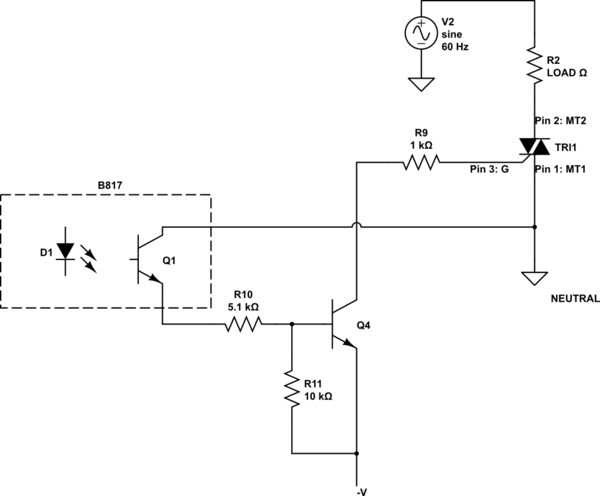I have this power supply board from a Honeywell HPA300 air filter that has a burned out triac (BT3) in this row of 4 side by side triacs (BT1-4). The conspicuous thing about the one that burned out is that it appears to be soldered in the reverse orientation as you can see from the images below. BT1, BT2, and BT4 all face one direction while BT3 inexplicably faces the opposite direction.
The PCB silkscreen printing of the part outline beneath these discrete components definitely conveys an orientation given by the thickness of how the rectangle is divided with the thin side oriented to the back and the thick side forward facing. This has a feel analogous to how electrolytic capacitors have an oriented silkscreen printing beneath them. This silkscreen rectangle I can depict with this ASCII art below.
|------------------------------------|
| |
|------------------------------------|
| |
| |
| |
|------------------------------------|
Does this outline serve to indicate how the component was to be installed on the board and the manufacturer failed to pay heed to it and was likely the cause of the failure? Are these triacs designed with polarity in mind or are they symmetric? From what I'm able to read of the sibling parts these are part number TG BT134 600D 1805. However I have been unable to locate a datasheet for this exact match, however I could find one for a BT134 600D 127
Additional Photos
There's another photo that also demonstrates this strange bending of BT3 to be out of plane with the others. I don't know if it was installed that way or began to bow as it heated up and burned out.


The evening this unit burned out, both the living room and dining room held that burnt electrical smell to them. This thing definitely let off smoke while we were away. It was left running with a timer I believe. Leading up to this catastrophic failure was a malfunctioning of the incremental touch button for power and to the different speed settings (going from off, low, medium, high). One of the speeds wouldn't operate and you'd have to jump to the next to get the fan to blow. I didn't note which speed was affected just that the state toggling was already malfunctioning.
Full PCB
Since the board is fairly small I was able to take a snapshot of both sides of it. I digitally edited the right half of the image, which is the bottom of the board, with a vertical reflection to make the coordinates overlap and to visually align the two for easier visual correspondence.





BT 134 600D 1811. Still leaves things a bit inconclusive. I edited the question and offered a full view of the PCB for review. That may help shed some light on the mystery. \$\endgroup\$Wsymbol, BT2 anL, BT3 anM, and BT4 anH. I assume those are for Turbo (whole motor), Low, Medium, and High Fan speeds. The triac that failed was BT3 so medium speed. \$\endgroup\$